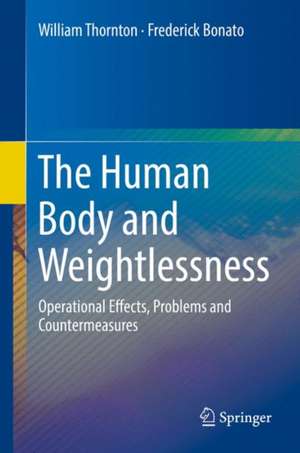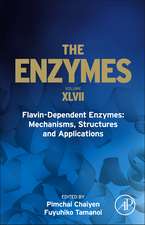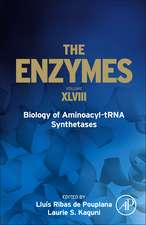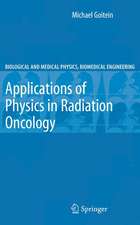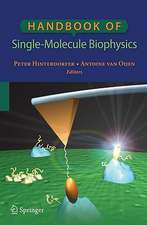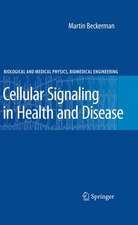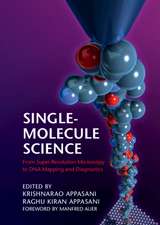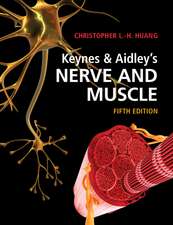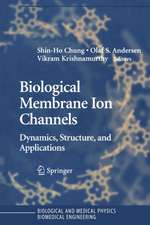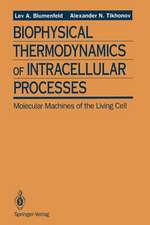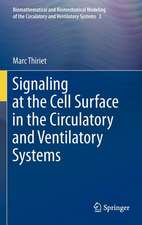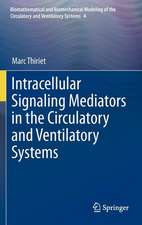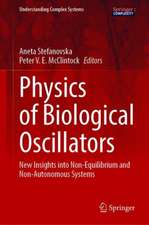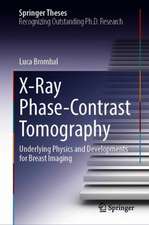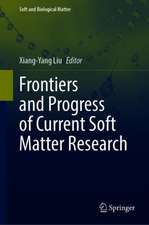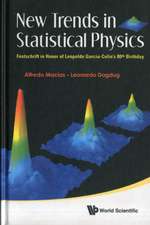The Human Body and Weightlessness: Operational Effects, Problems and Countermeasures
Autor William Thornton, Frederick Bonatoen Limba Engleză Hardback – 23 oct 2017
Starting with a brief definition and history of weightlessness, the authors then address in detail each problem as well as the countermeasures aimed at alleviating them. In some cases, alternative hypotheses regarding what can and should be attempted are also presented. As plans for long-term missions to the Moon and Mars develop, it will be essential to find countermeasures to weightlessness that are effective for missions that could span years.
| Toate formatele și edițiile | Preț | Express |
|---|---|---|
| Paperback (1) | 635.58 lei 38-44 zile | |
| Springer International Publishing – 11 sep 2018 | 635.58 lei 38-44 zile | |
| Hardback (1) | 1116.09 lei 6-8 săpt. | |
| Springer International Publishing – 23 oct 2017 | 1116.09 lei 6-8 săpt. |
Preț: 1116.09 lei
Preț vechi: 1361.08 lei
-18% Nou
Puncte Express: 1674
Preț estimativ în valută:
213.55€ • 222.99$ • 176.35£
213.55€ • 222.99$ • 176.35£
Carte tipărită la comandă
Livrare economică 15-29 aprilie
Preluare comenzi: 021 569.72.76
Specificații
ISBN-13: 9783319328287
ISBN-10: 331932828X
Pagini: 299
Ilustrații: XIX, 320 p. 181 illus., 142 illus. in color.
Dimensiuni: 155 x 235 x 26 mm
Greutate: 0.65 kg
Ediția:1st ed. 2017
Editura: Springer International Publishing
Colecția Springer
Locul publicării:Cham, Switzerland
ISBN-10: 331932828X
Pagini: 299
Ilustrații: XIX, 320 p. 181 illus., 142 illus. in color.
Dimensiuni: 155 x 235 x 26 mm
Greutate: 0.65 kg
Ediția:1st ed. 2017
Editura: Springer International Publishing
Colecția Springer
Locul publicării:Cham, Switzerland
Cuprins
1. An Introduction to Weightlessness and Its Effects on Humans.- 2. Basic Mechanisms.- 3. Space Motion Sickness and Vestibular Adaptation to Weightlessness.- 4. Fluid Shifts and Loss.- 5. Cephalic Fluid Dynamics and Ocular Changes in Weightlessness.- 6. Loss of Muscle and Bone During Spaceflight.- 7. Countermeasures to Loss of Muscle and Bone During Spaceflight.- 8. Loss of Aerobic Capacity During Weightlessness.- 9. Neuromuscular Inhibition.- 10. Loss of Body Mass During Weightlessness.- 11. Accommodations to Weightlessness.
Notă biografică
Dr. William Thornton has unparalleled experience in research, development and application of medical instrumentation and equipment, especially in human spaceflight. He also taught physical diagnosis and developed widely used computer-based multimedia programs and accompanying text in academic clinical medicine. His education includes physics, medicine, flight medicine, USAF flight school, (2000 plus hours as pilot of supersonic jets) and NASA astronaut training (two flights on Space shuttle).
In addition to unique and successful research and development in military programs and clinical medicine, Dr. Thornton has worked on problems of human spaceflight in the USAF space program and served for 27 years as a NASA astronaut, working on all programs from Apollo to ISS. Dr. Thornton has been Principal Investigator on over 20 inflight investigations. He was the flight surgeon in an unprecedented 54-day closed chamber low pressure test of equipment and procedures (SMEAT) for the Skylab missions. His findings produced redesign and replacement of several key items prior to that mission.
Dr. Thornton is the veteran of two Shuttle flights (STS-8 and STS-51B). He is the only person to date who has designed and flown with his own lab and protocol (STS-8) and was in charge of the first animal flight (STS-51B). His firsts include monitoring by telemetry surgical and ambulatory patients, automated EKG analysis, mass measurement devices for space, measurements in space demonstrating fluid shift and loss, measurements of loss of muscle and strength in space and means of prevention by exercise and diet, development of the Shuttle treadmill, rowing machine, waste collection system (toilet) and others. Thornton holds 50 patents in military aviation, clinical medicine and space biophysics.
Dr. Bonato has published widely on aerospace medical topics such as motion sickness, space motion sickness (with Dr. Thornton), simulator sickness, cybersickness, and commercial spaceflight. He has published over 30 articles and book chapters, as well as given over 100 invited talks, conference presentations, and workshops. The National Science Foundation and the National Aeronautics and Space Administration have funded Dr. Bonato’s research. Media outlets such as the Science Channel and CNBC have covered his work.
Since 2010, Dr. Bonato has served as Editor-in-Chief of the Aerospace Medical Association’s official peer-reviewed journal, Aerospace Medicine and Human Performance. Founded as the Journalof Aviation Medicine in 1930 and distributed to over 80 countries, the ‘Blue Journal’ is the most widely cited journal in its field. The journal publishes many articles pertaining to space medicine and issues related to spaceflight, including those related to weightlessness.
Dr. Bonato currently serves as the Provost and Vice-President for Academic Affairs at Saint Peter’s University and has a concurrent appointment as a full professor. He is a Fellow and Past President of the Eastern Psychological Association, a Fellow of the Aerospace Medical Association, and in 2015 was nominated and elected to the International Academy for Aviation and Space Medicine.
In addition to unique and successful research and development in military programs and clinical medicine, Dr. Thornton has worked on problems of human spaceflight in the USAF space program and served for 27 years as a NASA astronaut, working on all programs from Apollo to ISS. Dr. Thornton has been Principal Investigator on over 20 inflight investigations. He was the flight surgeon in an unprecedented 54-day closed chamber low pressure test of equipment and procedures (SMEAT) for the Skylab missions. His findings produced redesign and replacement of several key items prior to that mission.
Dr. Thornton is the veteran of two Shuttle flights (STS-8 and STS-51B). He is the only person to date who has designed and flown with his own lab and protocol (STS-8) and was in charge of the first animal flight (STS-51B). His firsts include monitoring by telemetry surgical and ambulatory patients, automated EKG analysis, mass measurement devices for space, measurements in space demonstrating fluid shift and loss, measurements of loss of muscle and strength in space and means of prevention by exercise and diet, development of the Shuttle treadmill, rowing machine, waste collection system (toilet) and others. Thornton holds 50 patents in military aviation, clinical medicine and space biophysics.
Dr. Bonato has published widely on aerospace medical topics such as motion sickness, space motion sickness (with Dr. Thornton), simulator sickness, cybersickness, and commercial spaceflight. He has published over 30 articles and book chapters, as well as given over 100 invited talks, conference presentations, and workshops. The National Science Foundation and the National Aeronautics and Space Administration have funded Dr. Bonato’s research. Media outlets such as the Science Channel and CNBC have covered his work.
Since 2010, Dr. Bonato has served as Editor-in-Chief of the Aerospace Medical Association’s official peer-reviewed journal, Aerospace Medicine and Human Performance. Founded as the Journalof Aviation Medicine in 1930 and distributed to over 80 countries, the ‘Blue Journal’ is the most widely cited journal in its field. The journal publishes many articles pertaining to space medicine and issues related to spaceflight, including those related to weightlessness.
Dr. Bonato currently serves as the Provost and Vice-President for Academic Affairs at Saint Peter’s University and has a concurrent appointment as a full professor. He is a Fellow and Past President of the Eastern Psychological Association, a Fellow of the Aerospace Medical Association, and in 2015 was nominated and elected to the International Academy for Aviation and Space Medicine.
Textul de pe ultima copertă
This book focuses on all of the major problems associated with the absence of body weight in space, by analyzing effects, adaption, and re-adaptation upon returning to Earth, using sound scientific principles embedded in a historical context. Serious problems for space travelers range from Space Motion Sickness (SMS) to recently discovered ocular effects that may permanently impair vision. Fluid loss and shifts, spinal changes, and bone and muscle loss are also all results of weightlessness.
Starting with a brief definition and history of weightlessness, the authors then address in detail each problem as well as the countermeasures aimed at alleviating them. In some cases, alternative hypotheses regarding what can and should be attempted are also presented. As plans for long-term missions to the Moon and Mars develop, it will be essential to find countermeasures to weightlessness that are effective for missions that could span years.
Caracteristici
Explores the effects of weightlessness in space on the human body as well as countermeasures that can be taken to compensate for this abnormality Contains a comprehensive analysis of bone and muscle loss that typically occurs during spaceflight, as well as various methods, both failed and successful, taken to attempt to counteract this Addresses recent discoveries of possible permanent vision effects (microgravity ocular syndrome) and the implications this has for long-term missions to Mars or the Moon
